On two successive December meetings of Mold and District Civic Society I provided members and visitors with a festive programme nostalgically entitled ‘Lloyd’s Luminous Lantern Lectures’ and based on my collection of magic lantern slides. Why ‘based on’? Let me explain: in 2016, rather than operating my early 20th century magic lantern to project 3¼-inch-square glass slides, I relied on 35mm-transparency replicas. The images chosen for 2017 were digital copies prepared for me by Society member Michael Johnson for PowerPoint projection. But I console myself with the thought that my audiences enjoyed exactly the same experience as they would have done had I had used my lantern and original slides.
The magic lantern (sometimes pretentiously called ‘the optical lantern’) was a major source of entertainment and education throughout the 19th century and well into the 20th. In fact, when I studied geology at the University of Bristol in the 1950s lectures were frequently illustrated by black-and-white lantern slides of rocks, minerals, fossils, topography etc. By now, no doubt, they will have been replaced by static and even animated PowerPoint presentations.
I insisted that my 2016 audience should respond with laughter to the two-part ‘magic lantern joke’ about a dog and a diner, however heavily Victorian the humour. Slide no 1 anticipates the canine response to the diner mistakenly stabbing its tail, believing it to be a tasty sausage. Slide no 2 portrays the inevitable result. I introduced this pair of images by wondering out loud whether they represent the stupidity of man or the intelligence of dogs! Each original slide was produced by etching the black outline on one piece of glass and adding the other colours by hand. Finally (as for all magic lantern slides) the transparent image was protected by a second piece of glass bound to the first one by edging tape.
Also etched and hand-painted was the set of six slides which, for the want of a published title, I dubbed The Apple Thieves. The first slide shows two young rascals sneaking up behind an unsuspecting farm labourer and slitting open the sack he is carrying on his back. They greedily collect the apples which pour out, eat some and pocket the rest. But corporal punishment is eventually meted out when they fail to escape their victim’s understandable wrath by attempting to slide between the bars of a nearby fence. As I added by way of delightd explanation: ‘They have filled not only their bellies but also their pockets …’.
The Sweep and the Whitewasher was an eight-part set of ‘chromo-lithographic’ slides, produce d by transferring ready-made full-colour images from paper to glass. Their unfolding confrontation is explained slide-by-slide by a sort of running commentary, which I invited my audience to recite, starting innocuously with: ‘A sweep and a whitewasher were engaged in the same house to work. Before commencing, they take a drink together’. But things soon get out of hand: for some reason, sweep pours soot over whitewasher and into his paint-pot. Then whitewasher retaliates by emptying paint down the chimney on top of sweep. And finally, not unexpectedly: ‘They meet downstairs and find their appearances reversed’.
‘Magic lantern solos’ would enable a versatile entertainer to combine the rendition of well-known hymns or songs with a set of suitable pictorial slides on the screen. Although Goodbye Dolly Gray was originally composed for the brief USA/Spain war of 1898 over the fate of Cuba and other territories, it soon became popularly associated with the 1899-1902 conflict in South Africa between Britain and the Boer republics of Transvaal and the Orange Free State. I sang this poignant love-song to pre-recorded piano accompaniment while projecting a selection of chromo- lithographic slides depicting British soldiers variously embarking, marching, fighting and retreating, ending with the audience joining in the final chorus aided by the words on screen:-
Goodbye Dolly I must leave you, though it breaks my heart to go
Something tells me I am needed at the front to fight the foe
See the soldier boys are marching and I can no longer stay
Hark, I hear the bugle calling, goodbye Dolly Gray.
These words was presented by two successive slides which I had prepared to augment the pictorial ones of the war. Thus ended my imagined re-enactment of a traditional magic lantern solo, complete with enthusiastic audience participation.
Photographic slides would be produced simply by printing a positive from a negative on a pre-sensitised 3¼-inch-square glass plate, then fixing and washing the image in the usual manner before adding the protective cover-glass. But the photographic views I showed that evening were of ‘life models’ (actors, of a sort) posing before theatrical backgrounds to re-enact Charles Dickens’s A Christmas Carol while I read out an abridged version of this popular seasonal story. For example, with the coloured photograph of miserly Ebenezer Scrooge at his front door on Christmas Eve on the screen, I read out: ‘[he] saw in the knocker not a knocker … but Marley’s face’. Then, after visits by the ghostly figures of his late business partner Jacob Marley and Christmases past, present and future, he becomes ‘as good a friend, as good a master, and as good a man as the good old city knew’.
DECEMBER 2017
My 2017 photographic slides were topographical and historical. A hand-coloured view of Telford’s Menai Straits suspension bridge displayed not only the early outer wrought-iron chains but also an additional one along the centre of the carriageway, removed during a major reconstruction of 1938. Evidence of the use of the bridge by horse-drawn vehicles is plain to see in the roadway! Pictures of Liverpool’s waterfront and of Queen Victoria’s 1897 Diamond Jubilee procession were uncoloured – the former shot from the air to show the city’s prominent Customs House, Liver Building and White Star Company headquarters together with circular tramway terminus, and the latter outside St Paul’s Cathedral with the congregation standing on the steps to greet the ailing monarch seated in her carriage and shielded from the sun by a large white parasol.
The hand-coloured magic lantern joke which I imposed on that evening’s audience featured not two but three naughty boys. They steal a lift on the back of a passing vehicle, initially unaware that its purpose is to water urban roads covered both by dust and horse droppings, much to the amusement of the driver.
The highlight of the programme was a series of chromo-lithographic slides relating the parable of the Prodigal Son (Luke 15, 11-32) accompanied firstly by a selection of verses telling the story in Welsh and in English, then in the Buckley dialect, written by the late Dennis Griffiths, brickworks manager, county alderman and producer of the town’s annual pantomime for many years. I reproduce the slide of the son who loyally stayed at home. He complains to his father: ‘Look, these many years I have served you, and I never disobeyed your command, yet you never gave me a young goat, that I might celebrate with my friends. But when this son of yours came, who has devoured your property with prostitutes, you killed the fattened calf for him’.
In the Buckley version, he says: ‘Feether, thou knows ’ow I’ve sleeved for thee, Spring, Summer, Hautumn an’ Winter, aw’ these ’ears. Nat once have I breeved [defied] thee or thee orders, and thou’s never give me as much as a little kid so that I could ’ave a ‘do’ with my butty-mateys’. He continues: ‘But now this lad of thine’s tormed up [turned up]… thou’s even killed the fat cawf for ’im’. ‘Eee, lad’, replies the father, ‘everything I’ve gotten’s thine. ’Ow could we ’elp salibreetin’ this ‘appy dee. Thee brother … was lost , but ’e’s been fund’. And they really do ‘salibreet’, as the last slide shows.
Faithful to tradition, I ended both evenings with a coloured chromo-lithographic slide asking obliquely for an appreciative round of applause, followed by a hand-coloured ‘Good Night’. Had I considered the time of the year, I could just as easily have bowed out with a seasonal greeting. Next time, perhaps.
In conclusion: these two shows demonstrate both the variety of topics, serious and humorous, which would have been covered by genuine magic lantern slides and the range of techniques employed in producing them.
Philip Lloyd
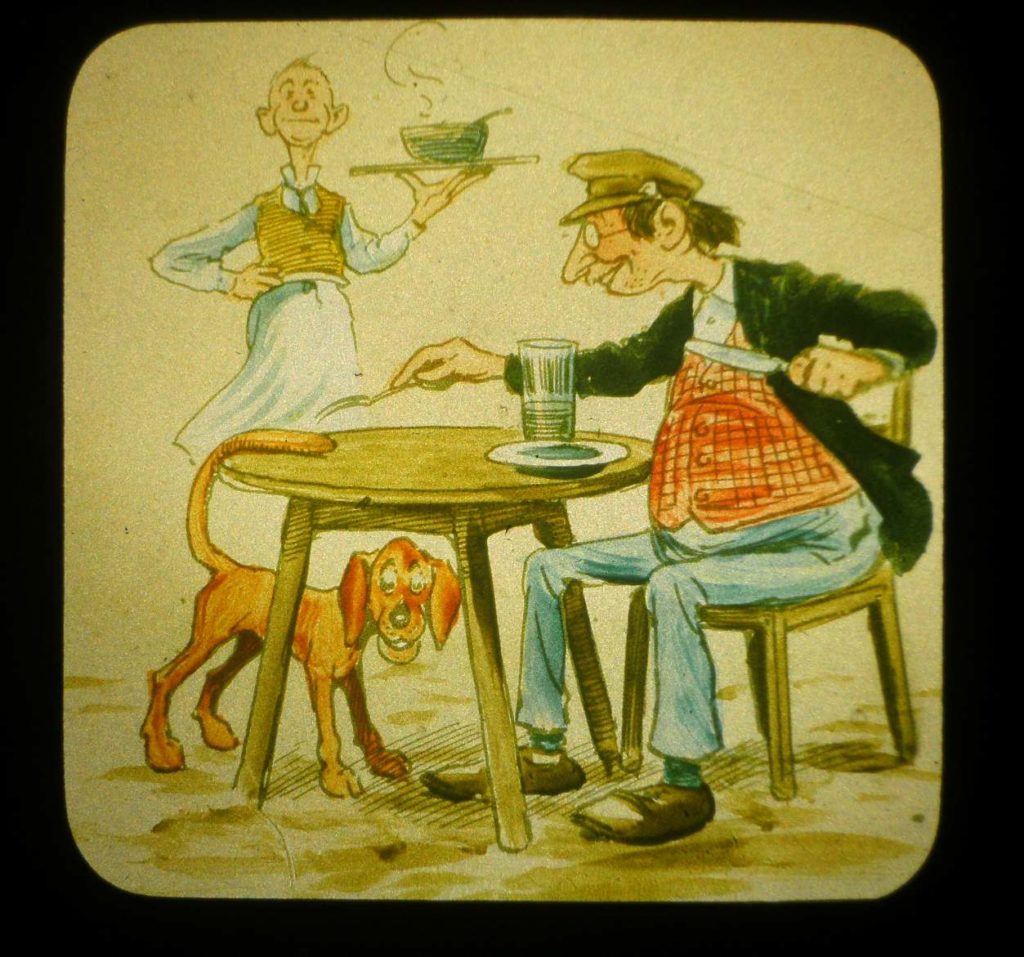
The Dog and the Diner magic lantern joke (1)
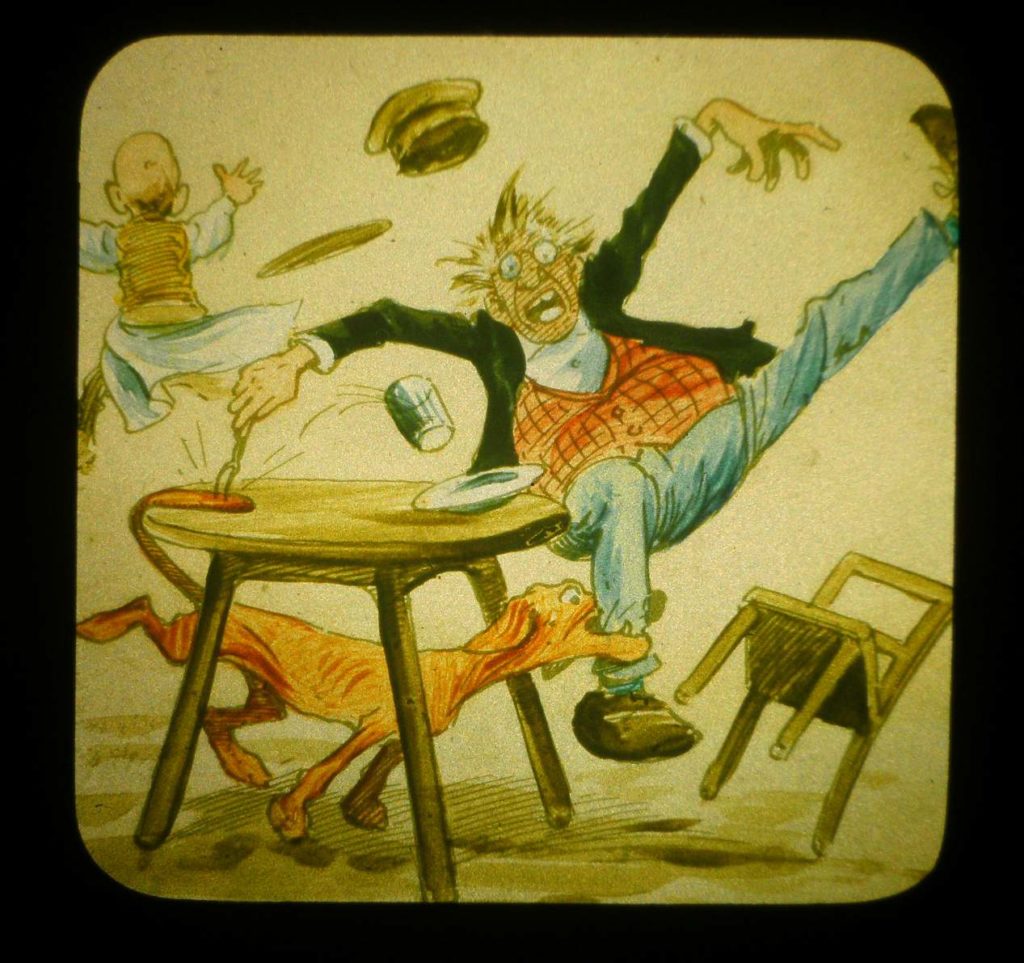
The Dog and the Diner magic lantern joke (2)
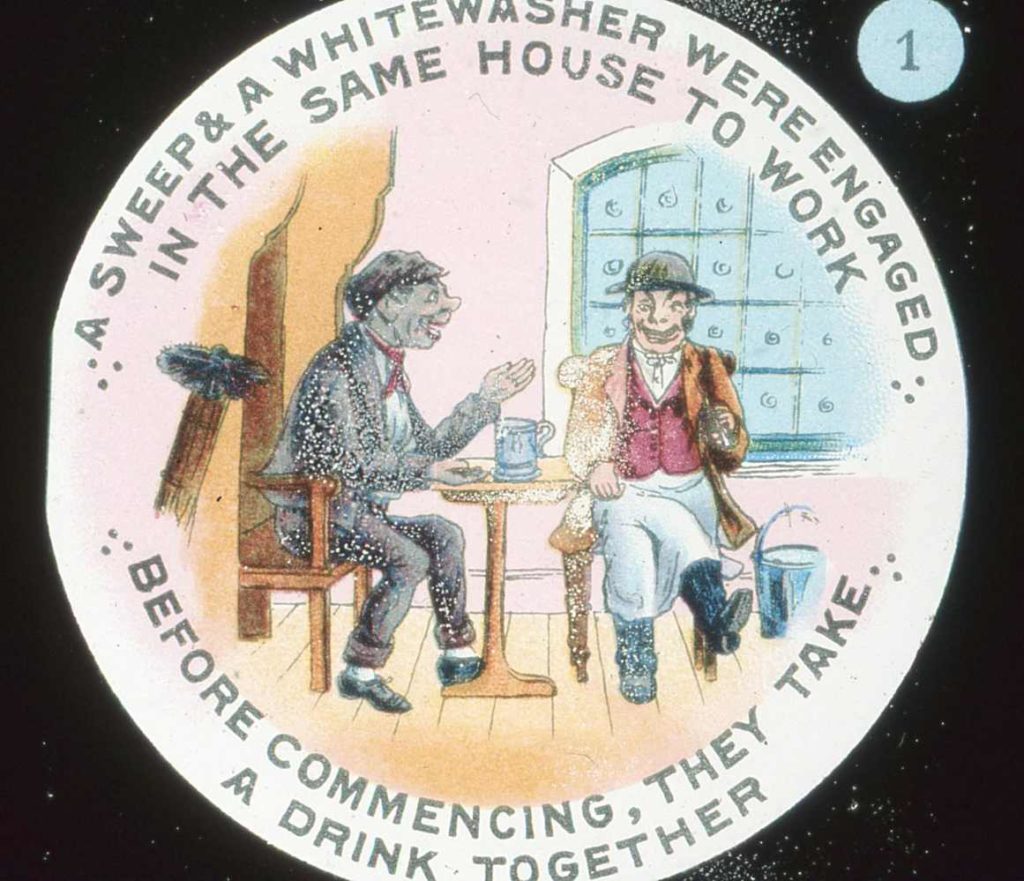
The Sweep and the Whitewasher: ’They take a drink together …’
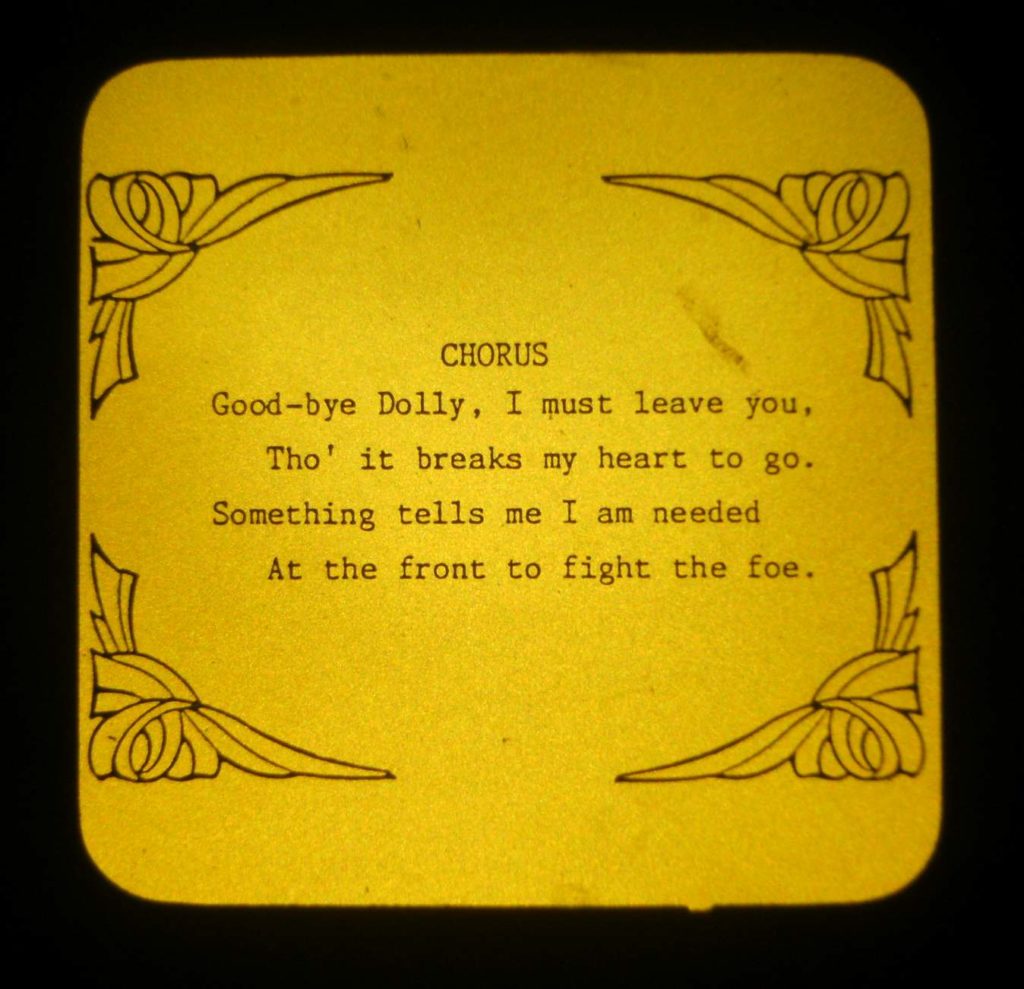
Goodbye Dolly Gray magic lantern solo: first half of chorus
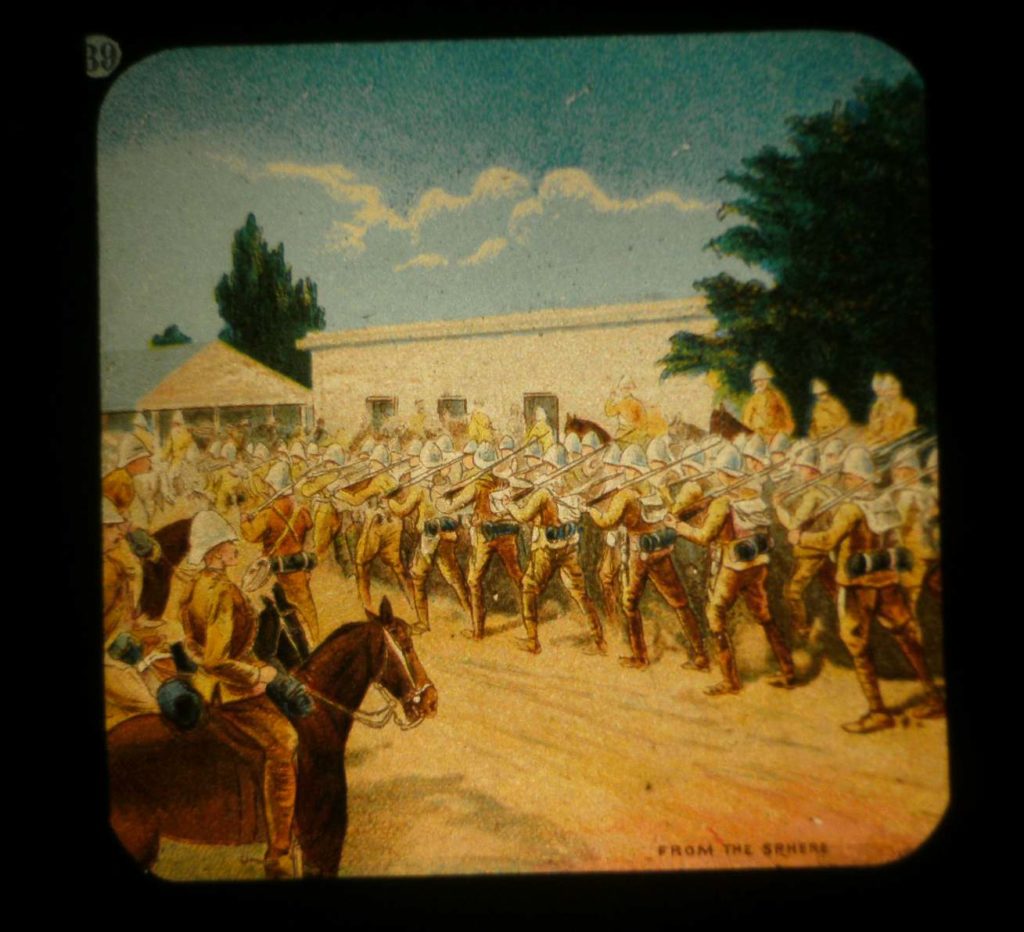
Goodbye Dolly Gray magic lantern solo: ‘See the soldier boys are marching …’

A Christmas Carol: ‘not a knocker … but Marley’s face’
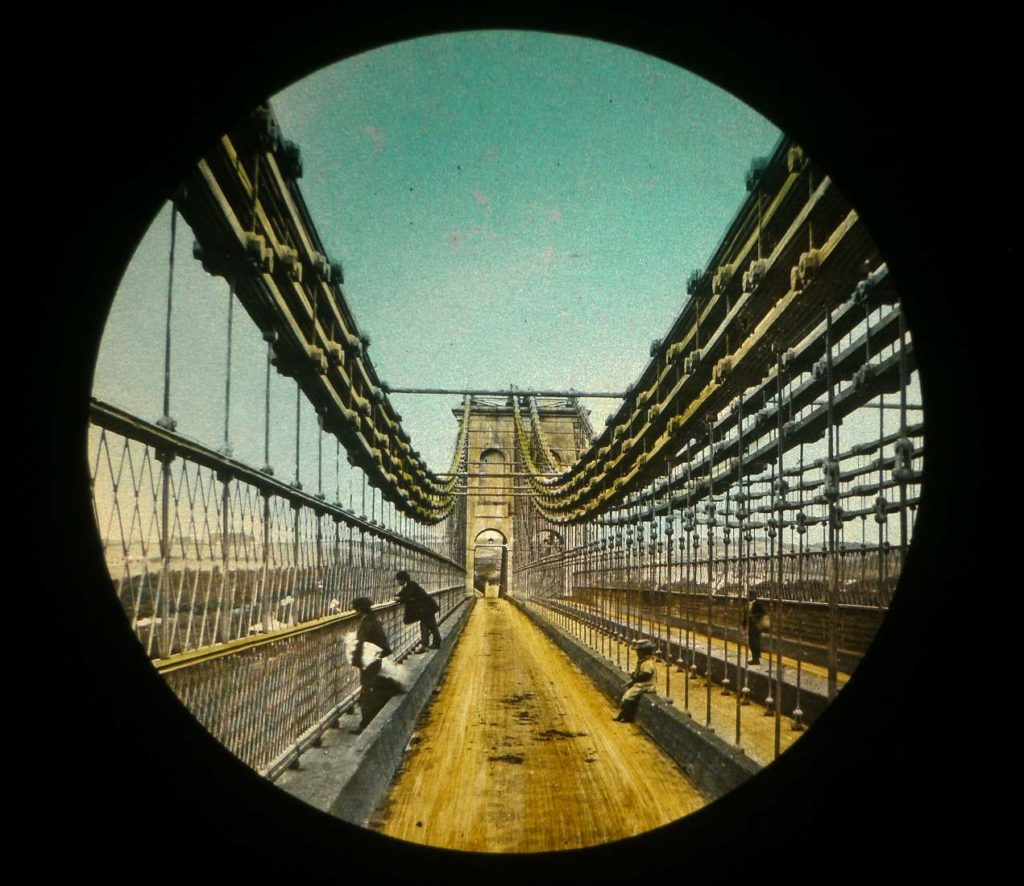
Menai suspension bridge
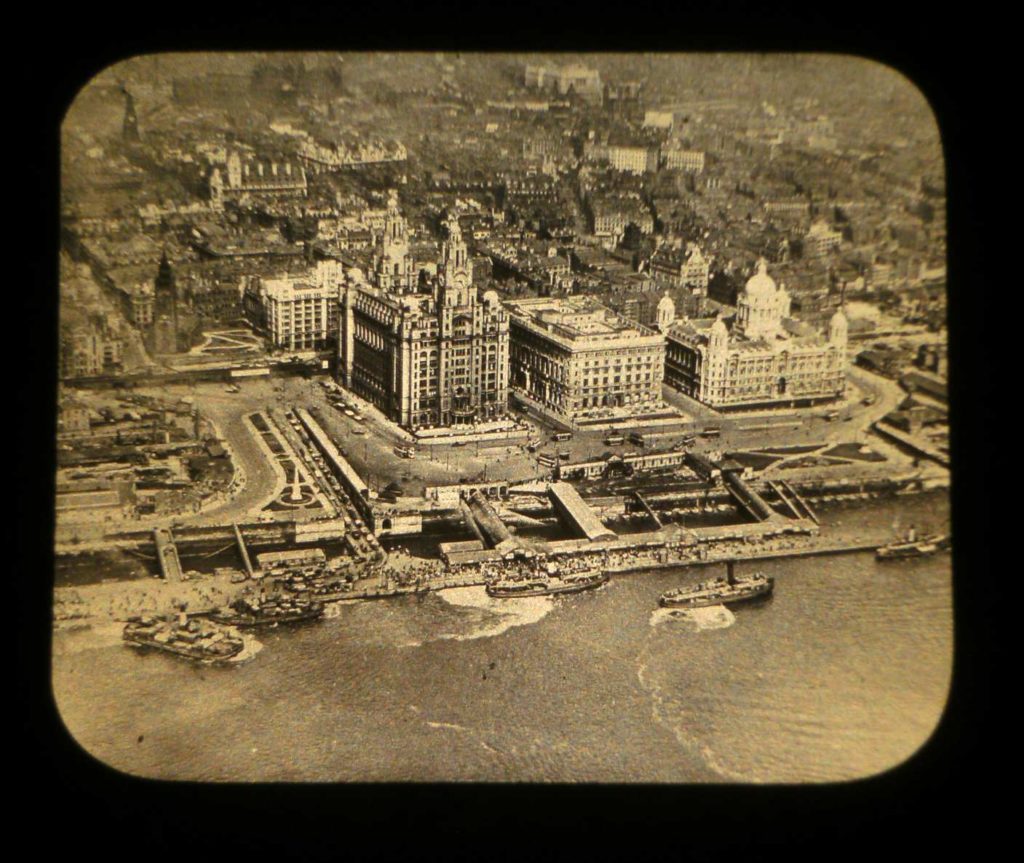
Liverpool waterfront
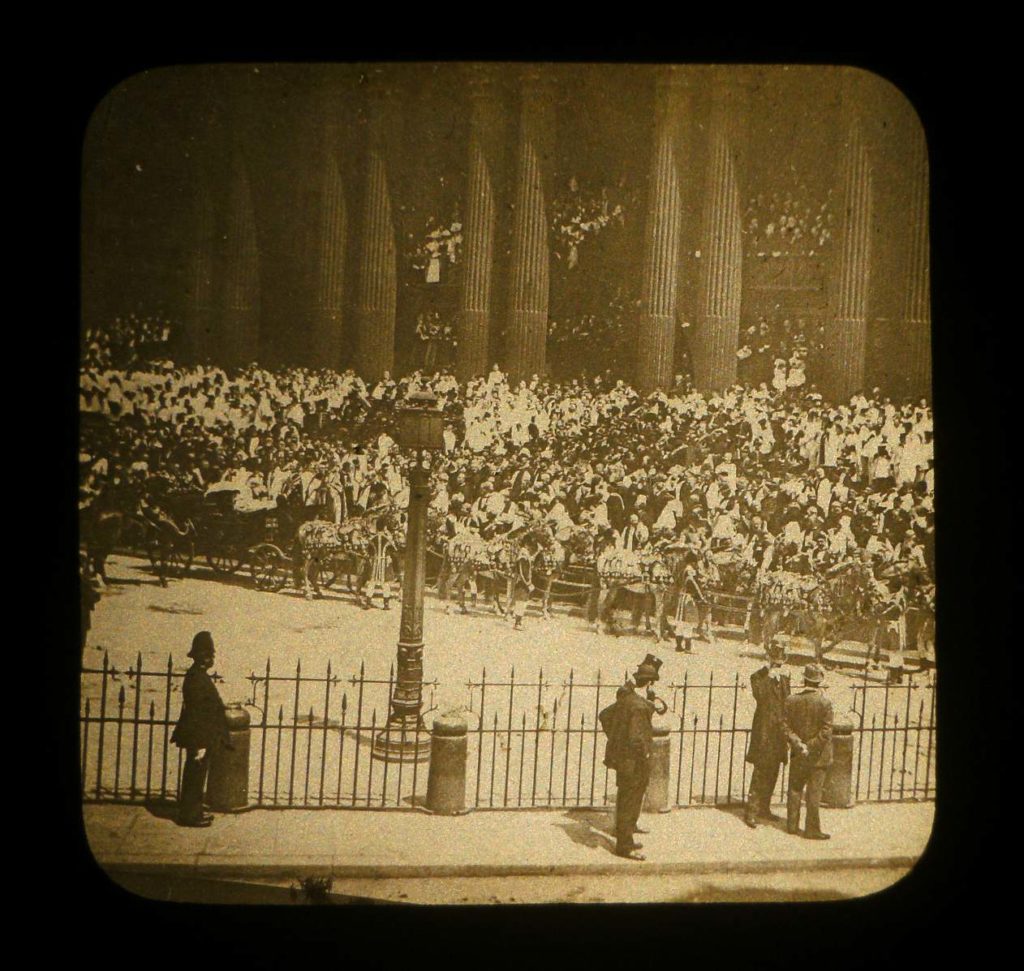
Queen Victoria at St Paul’s
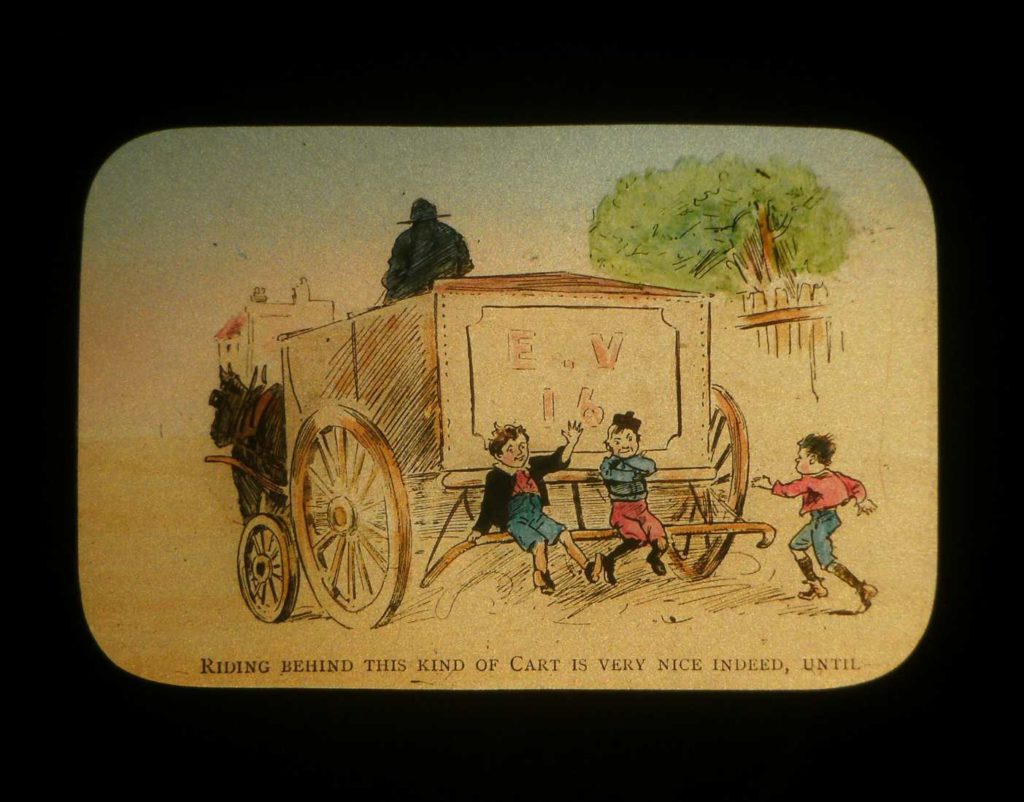
Water-cart magic lantern joke (1)
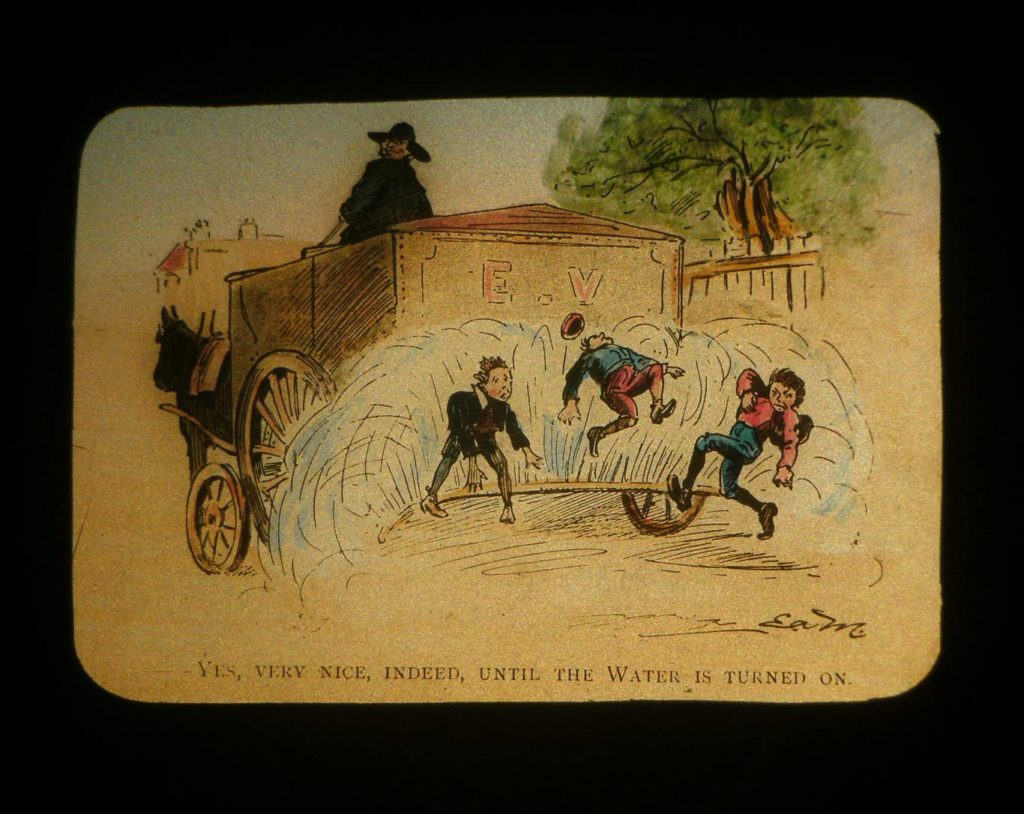
Water-cart magic lantern joke (2)
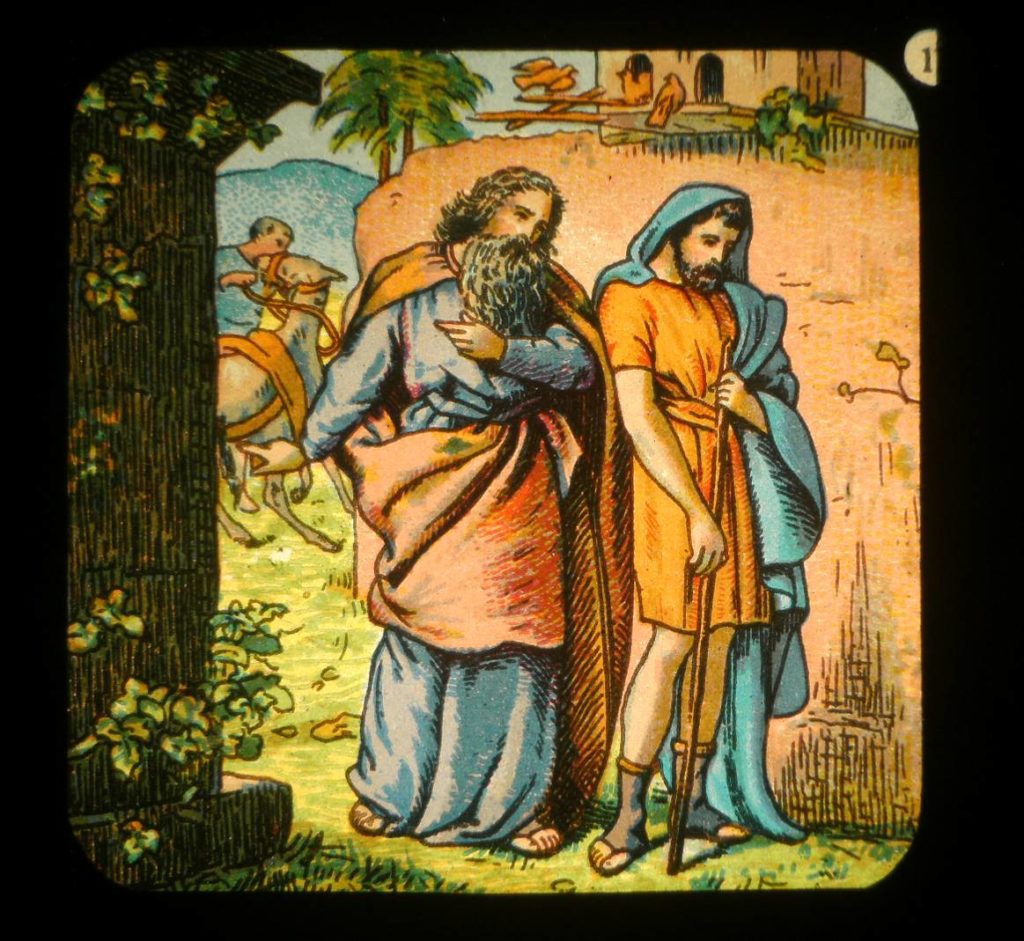
The Prodigal Son: ‘But now this lad of thine’s tormed up …’
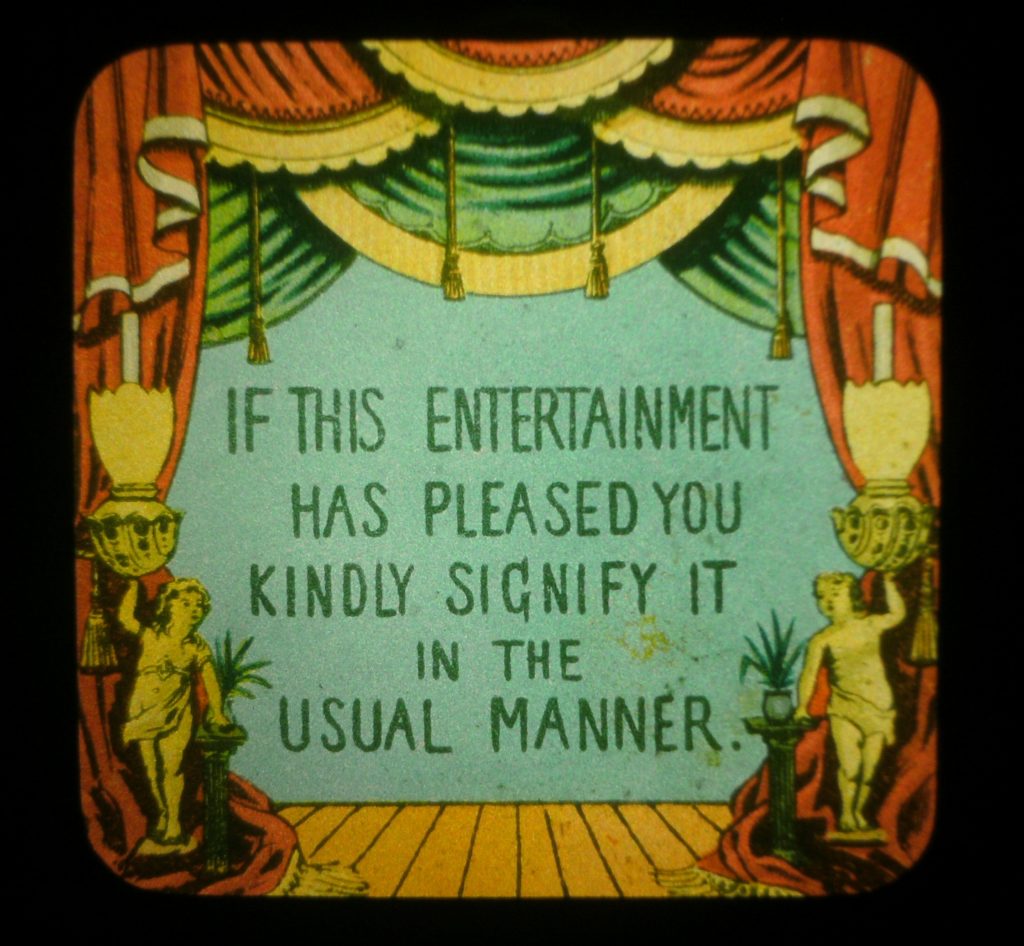
Applause, please
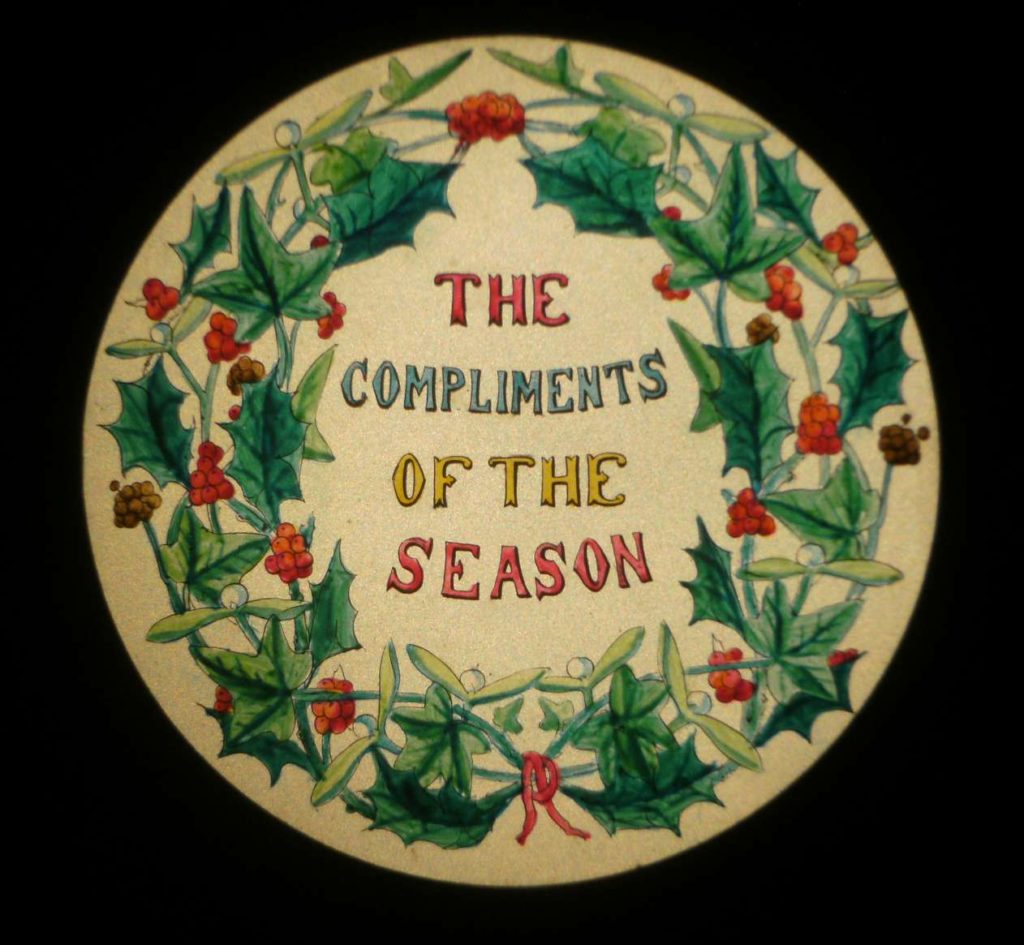
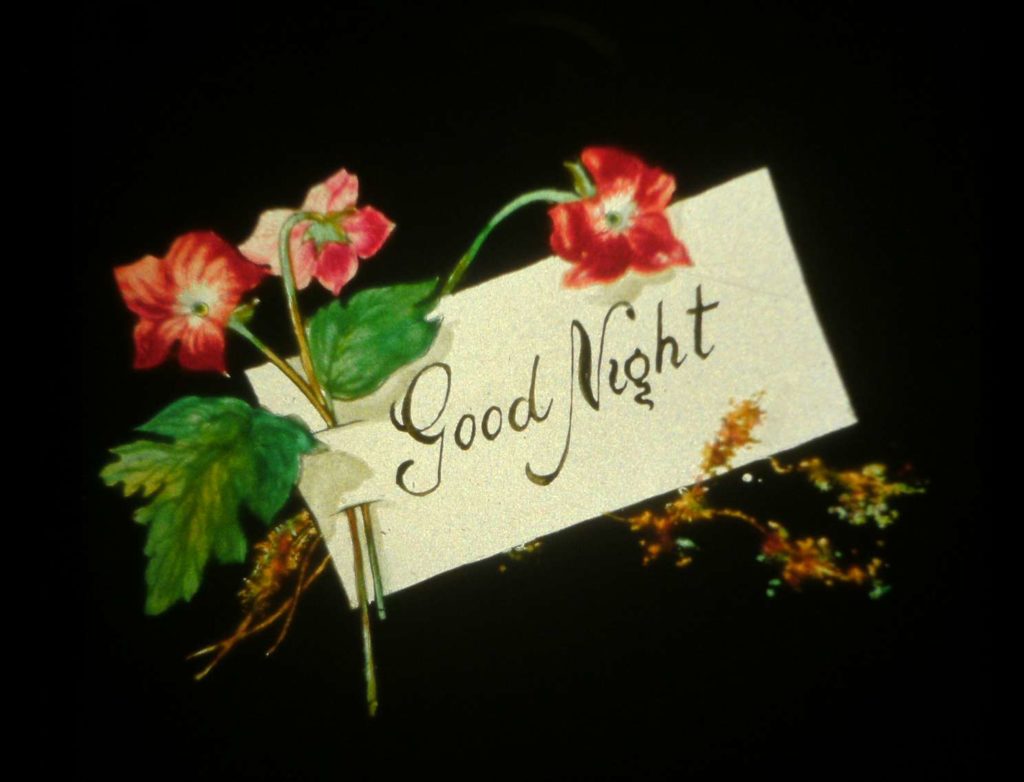
Copyright of articles
published in Ystrad Alun lies with the Mold Civic Society and individual contributors.
Contents and opinions expressed therein
remains the responsibility of individual authors.